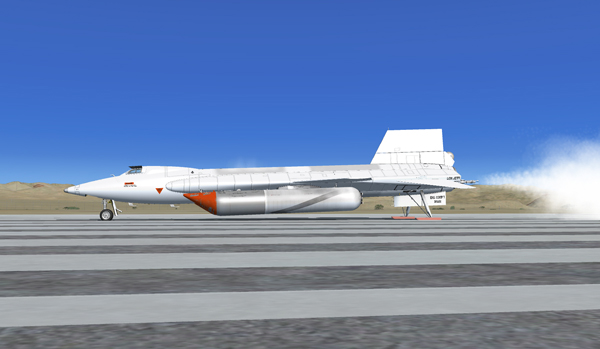
Precooling the engine (Prepar3D® v2 screenshot).
Takeoff
On a real mission, during takeoff of the carrier airplane, the X-15 pilot monitors all instruments and relay any information that could affect the planned mission.
- Ventral arming switch [35, fig. 5-1] – ARM.
- Windshield heater switches (two) [36, fig. 5-1] – Both switches ON. The windshield heater switches should be moved to ON when fogging or frosting of the glass is observed and should remain ON until the airplane is landed.
- Engine master switch [63, fig. 5-1] – ARM.
- Engine reset button [62, fig. 5-1] – Push (once).
- Engine precool switch [61, fig. 5-1] – PRECOOL. Precool the engine, then turn the engine precool switch to OFF (on a real mission, the X-15 pilot would precool the engine for 10 minutes on, then 20 minutes off).
Climb
On a real mission, the following procedures are done after takeoff of the carrier airplane, during the climb and cruise part of the flight:
- Instrumentation master power switch [15, fig. 5-3] – Check ON.
- Telemeter master power switch [18, fig. 5-3] – Check ON.
- Radio communications – Check. On a real mission, the X-15 pilot confirms radio communication with chase planes and ground station and also that communication is available between the X-15 airplane, chase planes, carrier airplane and ground station.
- Nose ballistic rocket heater switch [34, fig. 5-1] – ON.
